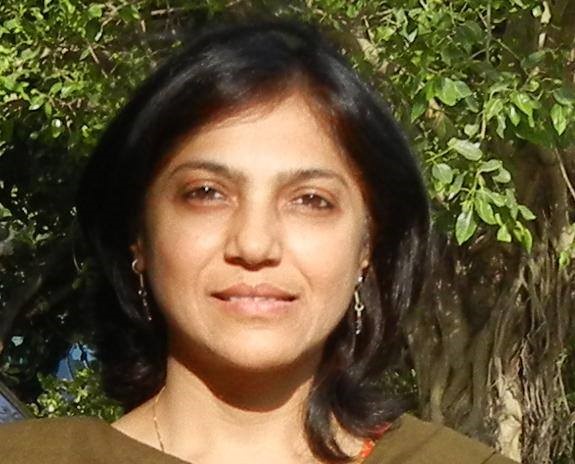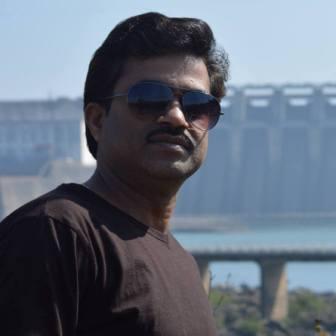Naaz Khair
 Currently, in circulation is the revised draft of NEP 2019 (National Education Policy, 2019) after incorporating feedback from around the Country and stakeholders at various levels. It is 1/8th the size of the earlier version. One is thankful that the demand for a smaller size policy document has been effectively met by the Government. This article focuses on the school education section of the revised NEP 2019 document and briefly, analyses proposed policy measures in the context of inclusive education.
Currently, in circulation is the revised draft of NEP 2019 (National Education Policy, 2019) after incorporating feedback from around the Country and stakeholders at various levels. It is 1/8th the size of the earlier version. One is thankful that the demand for a smaller size policy document has been effectively met by the Government. This article focuses on the school education section of the revised NEP 2019 document and briefly, analyses proposed policy measures in the context of inclusive education.
The Basis of NEP 2019
The revised policy document is stubbornly non-inclusive. The clamor pre-revision of the policy document for not-diluting the RTE Act, 2009, does not seem to have registered. The RTE Act, 2009 (Right to Education Act, 2009) concerns itself with inclusive education. The Act has shortcomings as it falls short of the promise of a Common School System and neighborhood schools. Nevertheless, the implementation of the Act for about a decade now has created much awareness for education across the country and resulted in improvements in overall elementary school enrolment, including enrollment of excluded communities. Alongside this, the demand for a Common School System and neighborhood schools has continued.
The revised draft NEP 2019 states, the RTE Act, 2009, will be reviewed and appropriate modifications made to enable NEP 2019. Introducing NEP 2019, the revised document says, the policy has proposed the revision and revamping of all aspects of the education structure, including its regulation and governance, to create a new system that is aligned with the aspirational goals of 21st century, while remaining consistent with India’s traditions and value systems. It further says, the rich heritage of ancient Indian Knowledge has been a guiding light for this Policy, and mentions scholars like Charaka, Susruta, Aryabhata, Bhaskaracharya, Madhava, Chanakya, Patanjali, and Panini, among numerous others, as products of the Indian Education System, and who have made seminal contributions to world knowledge, which must be put to new uses through the education system. Here it is interesting to note that all the above-mentioned ancient scholars belong to the Brahmin caste, and they are the only educationists mentioned in the policy document. As we know, it is the caste factor that prevented the spread of the ancient knowledge to the Bahujan castes and tribes within India, even if it earned world-wide repute.
(Pics of Brahmin educationists)
This upper caste education held sway for thousands of years and even during the Muslim and British rules, Christian and Muslim educationists concerned themselves primarily with the education of upper castes within their respective communities. Education of Bahujans/Pasmanda-Bahujans came very late, in the 19th /20th Century, due to the courageous and enlightening efforts of Bahujan/Pasmanda-Bahujan educationists including Jyotirao Phule-Savitribai Phule, Shahu, Babasaheb, Periyar, Fatima Shaikh, Asim Bihari, Abdul Qaiyum Ansari, and numerous others, who fought for educating the Indian masses. They continue to inspire the Bahujan/Pasmanda-Bahujans and their struggle for education. The real problem with the education system of our country lies in its inability to provide inclusive education through a strong public education system, rendering private sector/non-government sector education unnecessary. The Bahujan/Pasmanda Bahujan educationists fought for the right to the same quality education for all i.e. one system of quality education for all.
(Pics of Bahujan/Pasmanda bahujan educationists)
How does the NEP 2019 document address the issue of an inclusive education system?
To begin with, it fails to mention the names of Bahujan/Pasmanda-Bahujan educationists and highlight their fearless struggle for the inclusive education system in the Country. Although the policy document speaks of revamping the whole education system, in-fact it reinforces the existing unequal system of education.
Private-sector education will continue to do business, establishing low-cost schools in impoverished areas and high-quality schools in prosperous locations, with some caps on commercializing education. On the 25% seats reserved for the poor and socially disadvantaged in private schools and specified category schools (like Central Schools, etc) by the RTE Act, the NEP 2019 policy document promises no strong intervention by the Government to ensure its full implementation, and its extension to historically oppressed communities falling in the OBC constitutional category, who have been kept out by the government itself through rules framed by it (various state governments) for implementing 25% reservations. In October this year, a Lucknow-based school bagged the Guinness World Record by becoming the ‘world’s largest’ school in terms of the strength of students. The elite – City Montessori School (CMS) has over 55,547 students, on the other hand, it has only 15 students under the Right to Education (i.e. under 25% RTE reservation of seats for the poor and socially disadvantaged in private schools and specified category schools)! ( https://thelogicalindian.com/exclusive/rte-city-montessori-school/)
With respect to government schools, is NEP 2019 strengthening the government school system (state and local government-run schools), where most of the children of excluded communities study? The policy document proposes measures such as school consolidation, where less than fifty students study in a government school, linking small schools, that will close down as a result, to proposed school complexes. One can be sure of small private schools becoming the new ‘neighborhood school’ whenever small government schools close down due to the policy of school consolidation. School consolidation on one pretext or the other will soon usher in greater privatization of the education sector. There is evidence to show that this is already happening. About one lakh schools have been shut down all over the country after the enactment of RTE Act. (Rajasthan 17129 schools merged (4000 are completely closed), 2000 schools in Telangana, 900 in Panjab, 1200 in Uttrakhand and 5000 in Orissa), while low-cost schools and PPP-model based schools are mushrooming ( https://rteforumindia.org/resources/press-brief-english/). Far from discouraging private schools, and standardizing education through one strong public education system, the NEP 2019 policy document proposes yet more types of schools viz. public-spirited private/philanthropic schools.
On the teacher front, NEP 2019 proposes peer-tutoring, volunteers, social workers, community counselors along with TET (Teacher Eligibility Test) qualified teachers for teaching students in state and local government-run schools. This does not in any way compare with the teaching staff that big private schools employ to teach students. The RTE Act had done away with para-teachers.
Students passing out of big private schools, with high-quality teachers, will continue to have an edge over government school students when it comes to pursuing higher education/securing admissions in premier higher education institutes or securing better and higher-paying jobs, etc.
Moreover, the curriculum proposed in government schools by NEP 2019 does not support specialization at the senior secondary stage. In fact, it clubs classes IX, X, XI, and XII. Together they will make up the secondary stage of education. The policy document is clear that it is working towards an “individualized education system of the future”. Therefore, there will be no offering of ‘streams’ (science, commerce, humanities, etc) to batches of students. All students will go their individual ways and to that extent, the system will be made very flexible. All subjects will be multi-disciplinary, there will be no distinction between curricular and non-curricular, subjects will be reduced to modules/online modules. Certain essential subjects and skills will be learned by all school students. These will include, in addition to proficiency in languages: scientific temper and evidence-based thinking; creativity and innovativeness, collaborative approach, citizenship skills, imbibing of constitutional values; sense of aesthetics and art; oral and written communication; physical education, wellness, and sports; problem solving and logical reasoning; vocational exposure and skills; digital literacy, coding and computational thinking; ethical and moral reasoning; knowledge of India (including Indian knowledge systems); current affairs; and knowledge of critical issues facing local communities, states, the country, and the world. So learning of disciplines and specialization at the secondary stage is clearly not envisaged in the curriculum proposed by NEP 2019 for government schools. Under the circumstances, how will government school children become doctors, lawyers, and engineers?
Finally, medium of instruction is the language in which teachers and students communicate with each other and textbooks are written in. In his lecture delivered as part of a national consultation on ‘Education among Adivasis/Tribals’ held at NIAS (September 26-28th, 2010), Prof. Ganesh N. Devy said, the reorganization of Indian states after Independence was carried out along linguistic lines. The languages that had scripts were counted. The ones that had not acquired scripts, and therefore did not have printed literature, did not get their own states. Schools and colleges were established only for the official languages. The ones without scripts, even if they had a great stock of wisdom carried forward orally, were not fortunate enough to get educational institutions for them.
Students whose mother tongues are marginalized have to battle with the language disadvantage. The speakers of these languages have first to learn another dominant language, as well as Hindi/English. There are more than thousand mother tongues in India but only twenty-two languages are ‘officially’ recognized by the Constitution of India (8th schedule of the Constitution of India).
While NEP 2019 elaborates a lot on the support for teaching-learning languages falling in the Eighth Schedule of the Constitution, learning classical and foreign languages, and most importantly Sanskrit, it is not clear from the policy document whether tribal languages and dialects, with or without script, will be treated at par with the other languages for teaching-learning support by the government.
~~~
Naaz Khair is a Development Professional and Pasmanda-Bahujan Activist.








